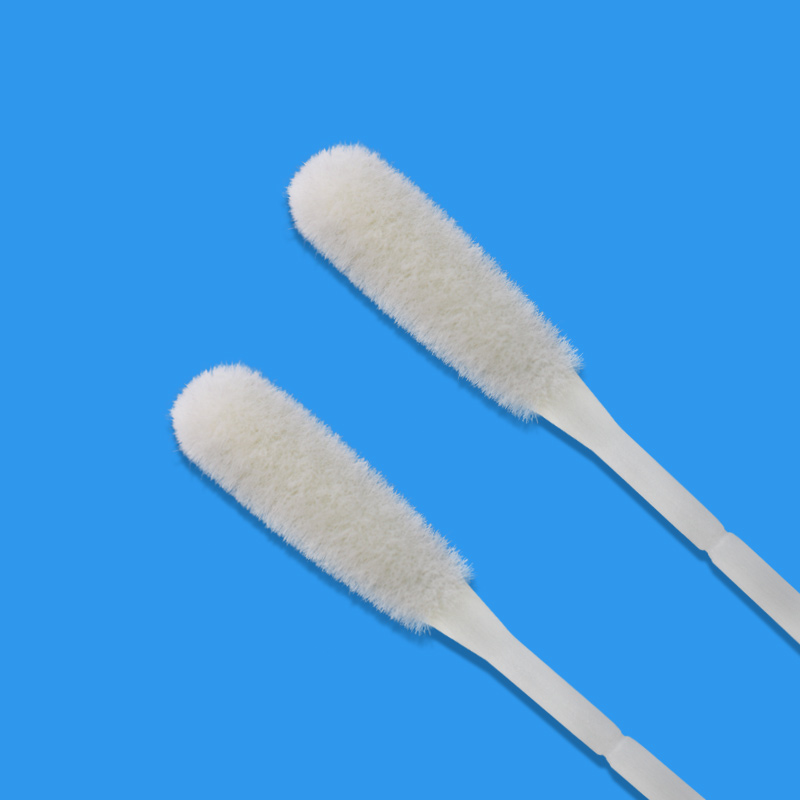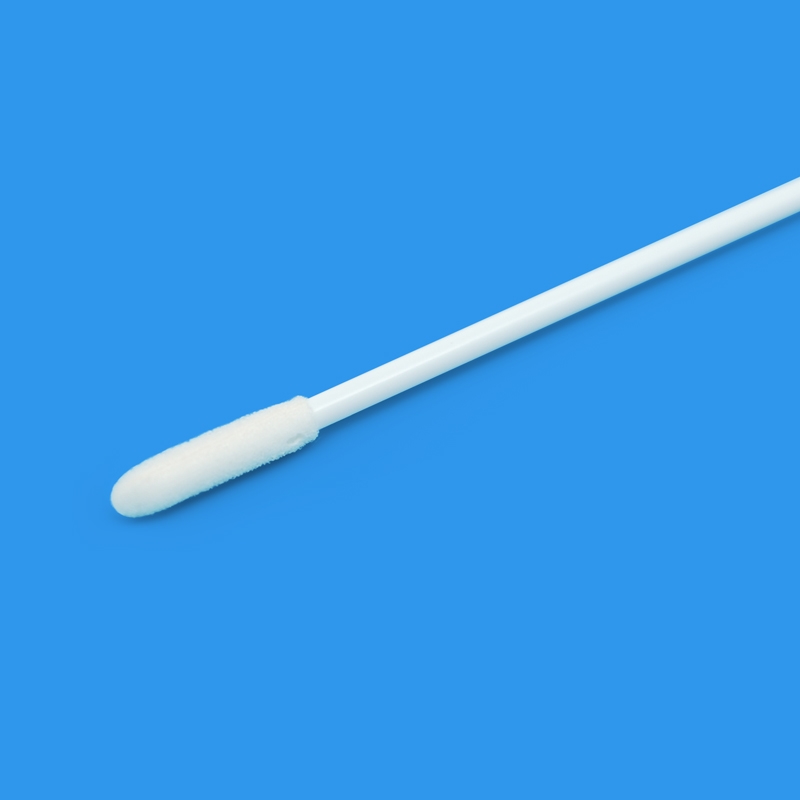Flocked Swab VS Sponge Swab
Flocked swabs and sponge swabs are two common types of specimen collection devices used in various medical and diagnostic applications, including DNA testing, virology, and microbiology. While both serve the purpose of collecting samples, flocked swabs offer several advantages over sponge swabs. In this comprehensive comparison, we will explore how a flocked swab is better than a sponge swab in terms of design, collection efficiency, versatility, and performance.
1. Design and Material
Flocked Swab:
Flocked swabs are made of a single piece of plastic or flexible material, typically nylon or rayon. The tip of the swab is covered with short, dense synthetic fibers that resemble a velvety texture. These fibers are securely attached to the swab, creating a uniform and absorbent surface for sample collection.
Sponge Swab:
Sponge swabs consist of a foam or sponge tip attached to a plastic or wooden handle. The sponge material is often less dense, with larger, irregular pores. This design can lead to uneven sample absorption and retention.
2. Sample Collection Efficiency
Flocked Swab:
Flocked swabs are designed to maximize sample collection efficiency. The densely packed synthetic fibers create a high surface area for sample absorption. This results in better sample uptake and retention, reducing the need for multiple swabs or passes during specimen collection.
Sponge Swab:
Sponge swabs may have uneven sample uptake due to the irregular sponge structure. They might not absorb and retain as much sample material as flocked swabs, potentially requiring additional swabs to obtain an adequate sample volume.
3. Versatility
Flocked Swab:
Flocked swabs are highly versatile and suitable for various sample types, including nasopharyngeal, oropharyngeal, vaginal, and wound specimens. Their design makes them ideal for applications where sample collection efficiency is critical, such as molecular diagnostics and viral testing.
Sponge Swab:
Sponge swabs are less versatile and may not be as effective for certain sample types or applications that require high sample yield. They are more commonly used for basic wound cleaning and general specimen collection.
4. Reduced Patient Discomfort
Flocked Swab:
The velvety texture of the flocked swab’s tip is generally less abrasive and more comfortable for patients during sample collection, especially when collecting samples from sensitive areas like the nasopharynx or throat.
Sponge Swab:
The rougher texture of somesponge swabs may cause discomfort or irritation to the patient during collection, potentially making the process less tolerable.
5. Improved Release of Sample
Flocked Swab:
Flocked swabs are designed to release collected samples efficiently when placed in the transport medium or during laboratory processing. This ensures that the maximum amount of collected material is available for analysis.
Sponge Swab:
Sponge swabs may not release samples as effectively, potentially leading to sample loss or reduced analytical sensitivity.
6. Reduced Risk of Cross-Contamination
Flocked Swab:
The one-piece design of flocked swabs minimizes the risk of sample cross-contamination between patients, as there are no seams or joints where residual sample material could be trapped.
Sponge Swab:
Sponge swabs with detachable heads or seams may pose a higher risk of cross-contamination if not handled and disposed of properly.
7. Consistency and Quality Control
Flocked Swab:
Flocked swabs can be manufactured with consistent quality, ensuring that each swab performs consistently and reliably. This is essential for diagnostic accuracy and reproducibility.
Sponge Swab:
Sponge swabs may exhibit variations in quality and performance due to differences in manufacturing and material quality, potentially affecting the reliability of test results.
“HCY, Health care for you” is our forever mission. We dedicate to offering safe & reliable products and medical services with our global creditable partners. HCY has already supplied to WHO, MAYO clinic, MGI, DDC, Yale University, Qorvo, Quanterix, Thomas Scientific, SD biosensor, Cardinal Health, Cleveland Clinic, Mars Petcare & LumiraDx, etc. in the past years.
 A professional supplier of swabs
A professional supplier of swabs


